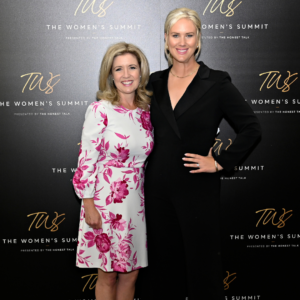What organizations can do to help women employees set boundaries: tips from Canada’s women leaders
Career05.12.2023

After three years of the pandemic, we invited Canadian business leaders to discuss the Future of Women and Work in a sold-out event held at Ottawa’s iconic TwentyTwo venue. With organizations forging post-pandemic plans – which, for many employees, include a return to in-office work – we believed it was crucial to spotlight women’s voices.
Our special partners, Abacus Data, presented data showing women are looking for more flexibility at work.

Our focus at The Future of Women and Work was Recruitment, Retention and Promotion: Keeping Women in the Modern Workforce, which led to considerable discussion about setting boundaries at work. Canadian women leaders shared valuable insights on how organizations can foster a culture of respect and balance and support women employees in establishing and maintaining boundaries.
The importance of boundaries at work
Workplace boundaries aren’t just about drawing lines between personal and professional life; they’re about empowering employees to prioritize their mental, emotional, and physical well-being. When women employees feel supported in setting boundaries, they can better manage their workloads, reduce burnout, and increase productivity, leading to increased job satisfaction, retention, and overall organizational success.
Please read on for quotes about setting boundaries, from influential Canadian women, collected at the Future of Women and Work event.
Building a culture of respect
Rachel Huckle, President and COO of Staples Canada, emphasized the need to foster a culture where it is acceptable to say no.
It’s a cultural thing, creating conditions where it’s okay to say no. ‘Do you want me to do A or do you want me to do B?’ There’s building confidence in women that empowers them to say that, but the culture within the organization also has to be such that they won’t feel slighted or penalized for doing that.
Rachel Huckle
Supporting managers with training

Beverly Young, Government and Public Sector Lead at Workforce Transformation, Deloitte, highlighted the significance of educating managers on boundary-setting guidelines.
The flip side is making sure managers have the training to understand what the guidelines are when people say, ‘I’m achieving my outcomes, I’m at capacity.’ Telling managers that you must allow your people to do that.
Beverly Young
Encouraging inclusivity and flexibility
Diana Palmerin-Velasco, Director of Indigenous Affairs and Diversity and Inclusion Policy at the Canadian Chamber of Commerce, advocated for inclusivity and equal distribution of responsibilities. She believes “organizations can also encourage male employees to adopt more of these flexible working arrangements and the distribution of house chores and all of that should be more equal as well. Because the reality is that for many women, we immediately put our hands up, we do it all, and suddenly you realize you don’t have any more fuel.”
- Communicate clearly: Openly communicate your boundaries with supervisors and colleagues. Express your needs and limitations respectfully and assertively.
- Prioritize self-care: Take breaks, practice mindfulness, and engage in activities that help you recharge outside of work.
- Learn to delegate: Don’t be afraid to delegate tasks when possible, and trust your colleagues to handle responsibilities.
- Practice time management: Prioritize tasks and set realistic deadlines to avoid overwhelming workloads.
- Say “no” when necessary: Politely decline additional work when it exceeds your capacity, and explain your reasons if needed.
Promoting a culture of boundary-setting within organizations is pivotal to ensuring the success and well-being of women employees in Canada. By encouraging open communication, providing support for managers, and fostering inclusivity, organizations can empower theirwomen workers to thrive both personally and professionally. Setting healthy boundaries at work benefits not only the individual but also contributes to a more productive, engaged, and balanced workplace overall.










